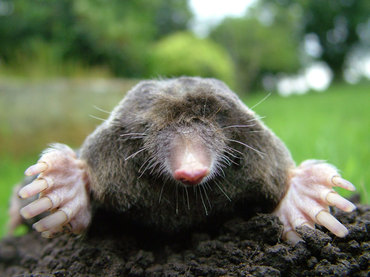Resource
Facts from the Molehole:

- Moles are solitary; seldom more than 5 to an acre of land.
- An average of 1 - 3 moles in an average suburban lawn, with the presence of just 1 producing significant damage.
- Moles eat only live insects and worms (mature insects, snail larvae, spiders, small vertebrates), with earthworms and white grubs being their favorite foods.
- Moles prefer moist, sandy loam soils in lawns, gardens, pastures, and woodlands. They generally avoid heavy, dry clay soils.
- Moles push dirt up through vertical tunnels onto the surface.
- Moles can eat 70 to 80% of their weight in food daily. They actively feed day and night at all times of the year.
- Moles do not hibernate.
- Burrowing activity occurs year-round, but peaks during warm, wet months.
- Moles breed in late Fall, early Winter, giving birth in late Winter and early Spring.
- Trapping of the female early, can result in the elimination of the entire litter.

